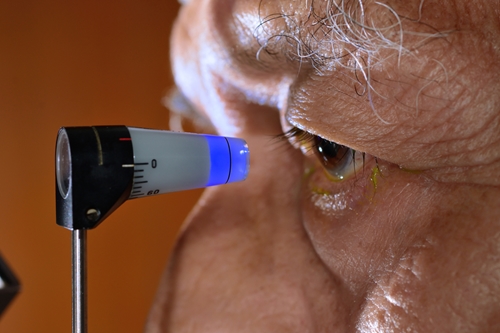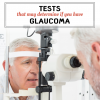According to the Mayo Clinic, glaucoma involves damage to the optic nerve which can greatly affect a person’s vision. In the U.S. it is a major cause of blindness. Older individuals are at a particular risk of developing glaucoma and should visit a doctor to learn how often to get tested. Here are a few methods and tools that health care providers use to diagnose glaucoma:
Visual Field Testing
The Glaucoma Foundation noted that a physician may test your field of vision to learn how much damage has occurred in your eyes. You will be asked to lean your chin on a stand and look at a computer screen, similar to one that is used for a normal vision check at an eye doctor. The professional will set the computer to display a series of lights and you must press a buzzer to indicate the presence of each burst. The lights will appear in various locations to test your peripheral and straight-on sight. As you perform this task, the computer registers how quickly your eyes notice the lights and in what areas you have trouble seeing. Those with severe glaucoma may have extensive damage and miss many of these triggers or catch all but a few.

- Doctors will assess your vision with a series of tests to determine if you have glaucoma.
Tonometry and Ophthalmoscopy
The Glaucoma Research Foundation wrote that tonometry and ophthalmoscopy are commonly used in routine eye tests to check for forms of glaucoma. To measure the pressure in your eye, a doctor or technician uses a tonometer to measure how your eye reacts to a minute puff of air. Each individual’s eye pressure is unique, but glaucoma is most common between 12 and 22 millimeters of mercury, the scale that physicians use to record eye pressure.
You may have also encountered ophthalmoscopy at a regular eye exam. A practitioner will place eye drops in both eyes to dilate your pupil. The doctor or ophthalmologist can then shine a light into your eye to identify if you have incurred any optic nerve damage.
Gonioscopy
The angle at which fluid drains out of the eye can have a major effect on whether a person has glaucoma. The blood vessels and pigmentation in the skin around this area may also factor into the condition. To view how this occurs, a professional may turn to gonioscopy. During this procedure, the eyes are numbed with anesthetic drops, and then a contact lens with mirrored insides is placed over the eye. The doctor can then see into the eye in varying directions to check that fluids are able to properly drain. Narrow angles in the trabecular meshwork (area where drainage occurs) may cause acute glaucoma and even block fluid from draining away from the eye.
There are many tests used to determine if an individual has glaucoma because there are many factors that may indicate if a person has this condition. If you are concerned that you may have glaucoma, call your eye doctor to schedule an appointment right away.
If you found an error, highlight it and press Shift + Enter or click here to inform us.



